Rewind to Issue #109 of Singletrack Magazine, for Wil’s review of the Canyon Exceed CF SLX 9.9.
When staring a bike up and down like the Canyon Exceed, you’re certainly left with little question as to either its intentions or its capabilities. One glance at the thin frame tubing and that audacious RS-1 fork, and you quickly understand that this is a bike that’s designed for travelling from A-to-B as fast as humanly possible.
For the most part, carbon hardtails rarely suggest anything other than balls-out speed and backbreaking discomfort. But beneath the Canyon Exceed’s sharp and angular exterior lays some carefully though-out technologies and features that are designed to offer a more comfortable and confidence inspiring ride than you might initially assume.

Replacing the previous Grand Canyon carbon hardtail, the Canyon Exceed CF SLX was first released into the wild last year, and it will carry on into 2017 unchanged. Designed for XC and marathon racing, the Exceed features a high-tech carbon frame that holds the mantle as being the lightest mountain bike to have ever come from the Canyon stable. And with a claimed frame weight of just 870 grams (for a medium size), it may very well be one of the lightest carbon hardtails in the world.
For 2017, Canyon has split up and expanded the Exceed range with the introduction of a cheaper SL frame. In total, there are now twelve different spec options in the Exceed range – five built around the higher-end SLX frame, and seven models based upon the cheaper SL frame. Prices start at £1799 for the Exceed CF SL 6.9 and go all the way up to £7999 for the CF SLX 9.9 LTD. That top-of-the-range model comes complete with trick DT Swiss OPM Carbon forks, exotic Tune Black Foot cranks and German manufactured six-spoke wheels from Bike Ahead Composites. It also has a claimed weight of just 7.9kg that, quite frankly, would embarrass many road bikes on the market.

You can also get the Exceed CF SLX as a standalone frame for those looking to custom build their own dream machine. The frame retails for £1599. There are also women’s complete bike option as well, which comes with a ladies saddle, a shorter stem, narrower bars and lower gearing, and are available down to an X-Small size.
The model that we’ve been testing is the Exceed CF SLX 9.9, which previously sat in the middle of the range with an RRP of £3199. It’s technically a 2016 model year bike, but the frame remains unchanged for 2017. You can get the Exceed in sizes Small through to X-Large, with the Medium size and above using 29in wheels, and the Small and X-Small sizes using 27.5in wheels. Regardless of spec, each Exceed model comes with a maximum rider weight limit of 120kg.
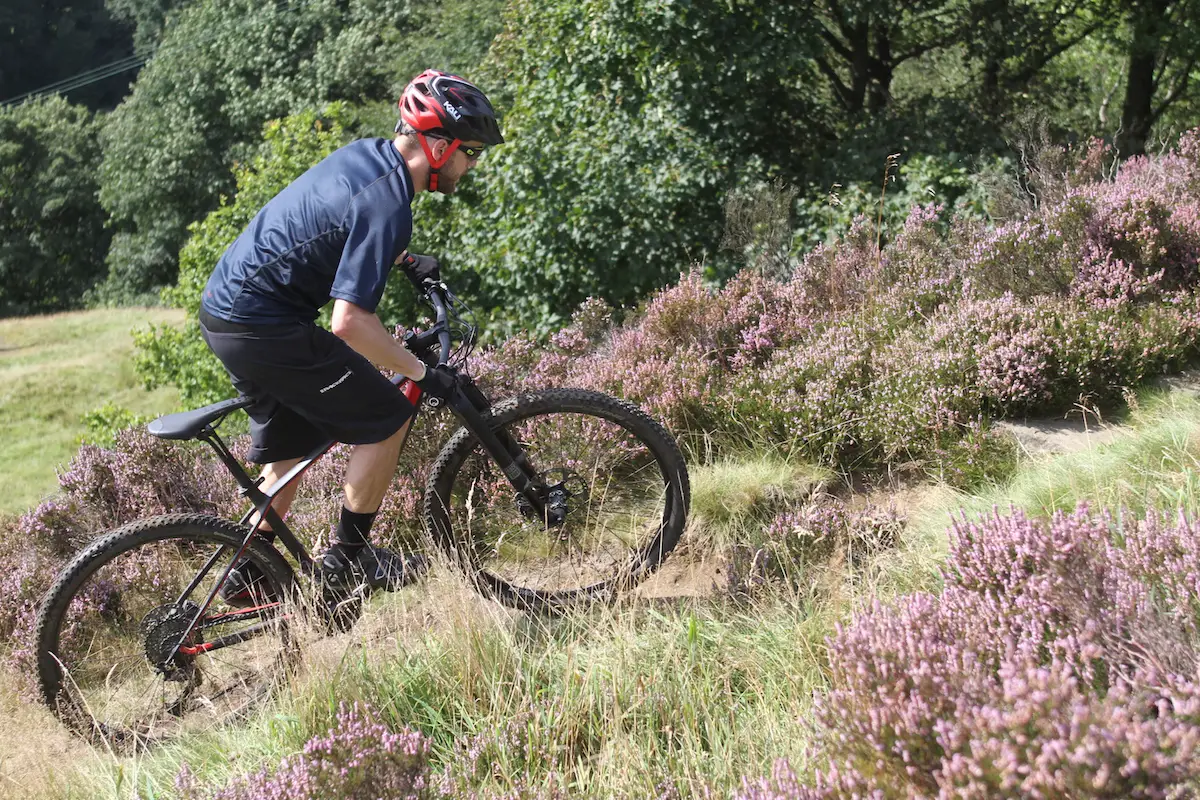
Setting Up
Like all Canyon bikes, you purchase the Exceed online direct through Canyon, and it’s delivered straight to your door. Prior to delivery, the frame is assembled with all its components at Canyon’s German factory, and then is checked over, tuned and test ridden by a single mechanic. The bike is safely packaged up and placed into a sturdy cardboard box that Canyon calls the ‘Bikeguard’. It’s actually a really handy box that you should hold onto if you intend to do any travel with your bike in the future.
Once the box arrives, Canyon claims you’ll be ready to roll in just 10 minutes. To help you with assembly, Canyon includes the world’s most enormous bike manual, as well as a shock pump, carbon assembly paste, and a nifty torque wrench set. All you need to do from there is fit the front wheel, install the handlebar, inflate the tyres, and set the fork pressure. Save for a few tweaks to the saddle position and controls, the bike is otherwise ready to hit the trails.
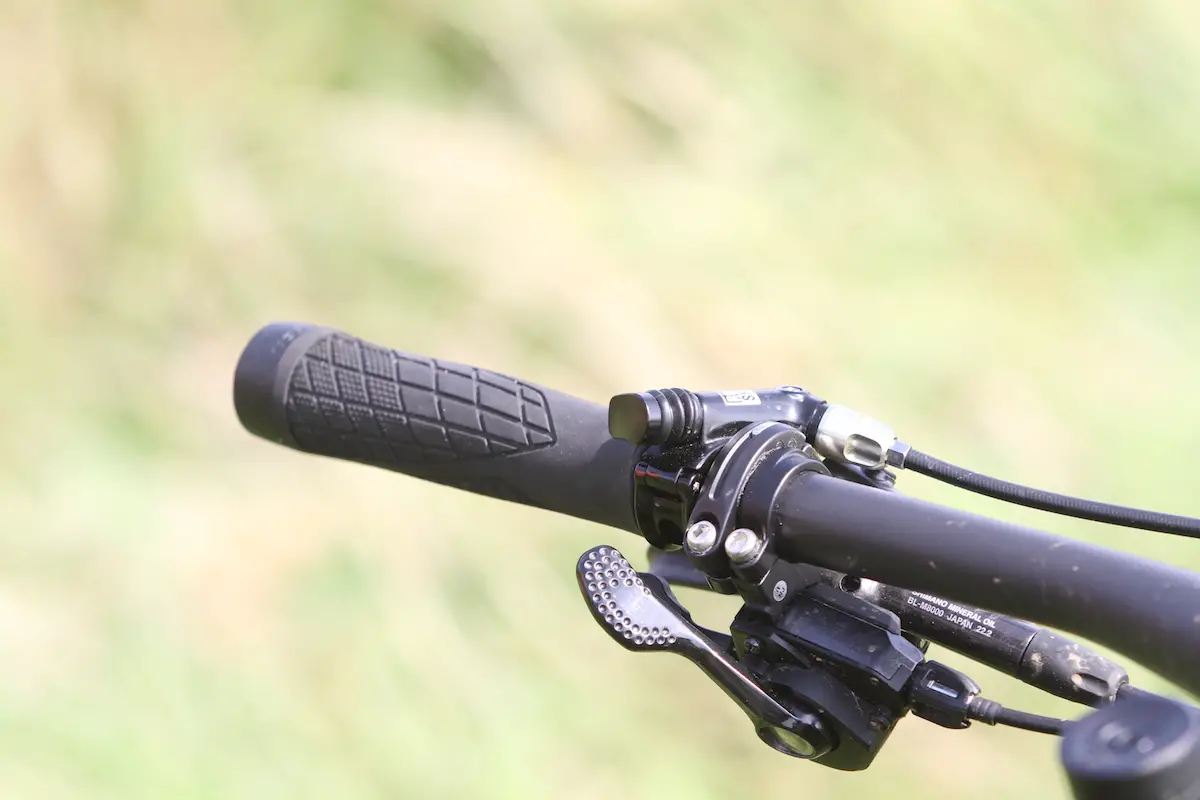
The build quality itself is excellent, and consistent with what we’ve experienced with other Canyon mountain bikes. I checked over the bike with a fine-tooth comb and was impressed to find that everything was tight and properly installed. Even the splines on the freehub body had been greased for the cassette. As further proof of Canyon’s build quality, the Exceed exhibited nary a peep all throughout testing. It was tight and quiet from whoa-to-go.
One thing to note about purchasing directly from Canyon is that the cost of shipping and the Bikeguard will set you back a non-negotiable fee of £47.98. So it’s worth factoring that into the end price of the complete bike.
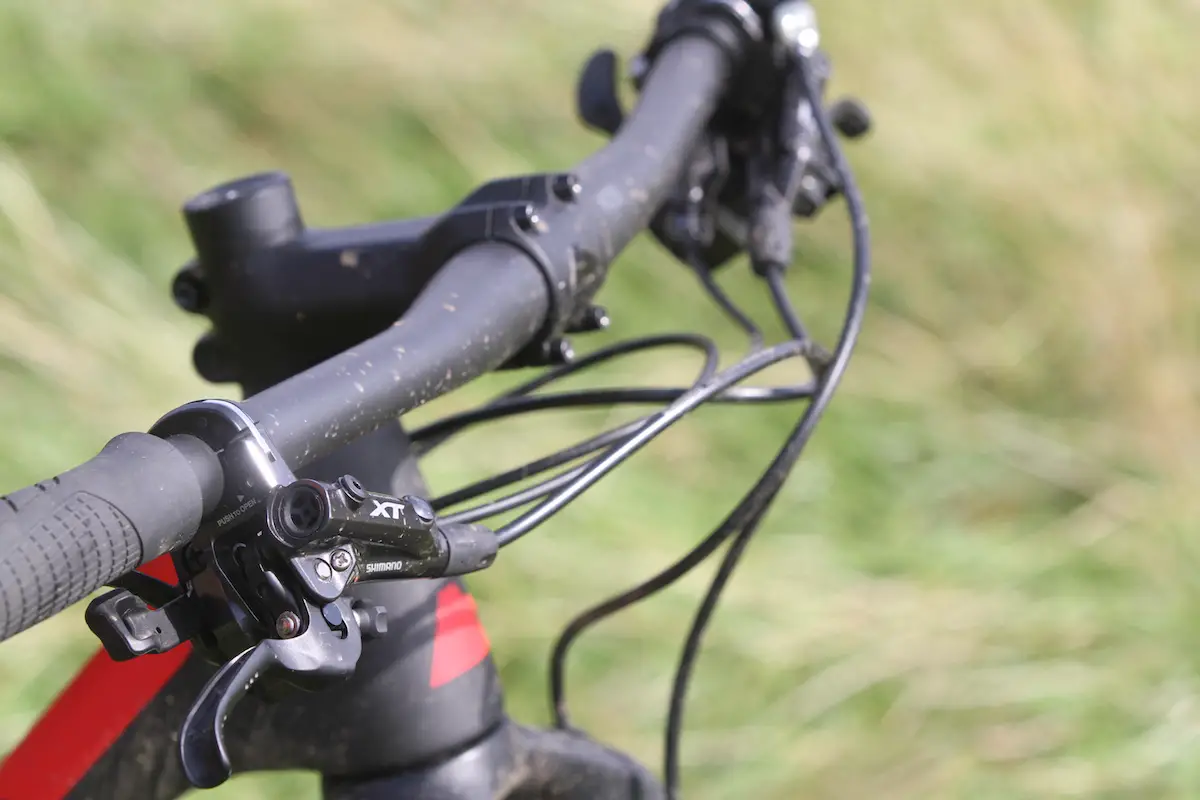
There are other costs worth factoring in too. Out of the box, most Canyon mountain bikes will come with lengthy cables and hydraulic lines, which is necessary due to the shipping method. If you’re fussy like me and you don’t want a mess of noodles hanging off your bars, consider a trip to your local bike shop to have the brake lines cut and bled, and the internal gear cables dealt with.
Another service that you won’t get by buying direct is a bike fit. That might not be important to some customers, but it my experience, a session with an experienced bike fitter can turn a good mountain bike into an incredible mountain bike. And that goes whether you’re riding a lightweight race hardtail or a 160mm travel full suspension rig. Of course those looking to buy an Exceed are likely to be spending a lot of time in the saddle, so I would highly recommend booking in a professional bike fit with a local shop.
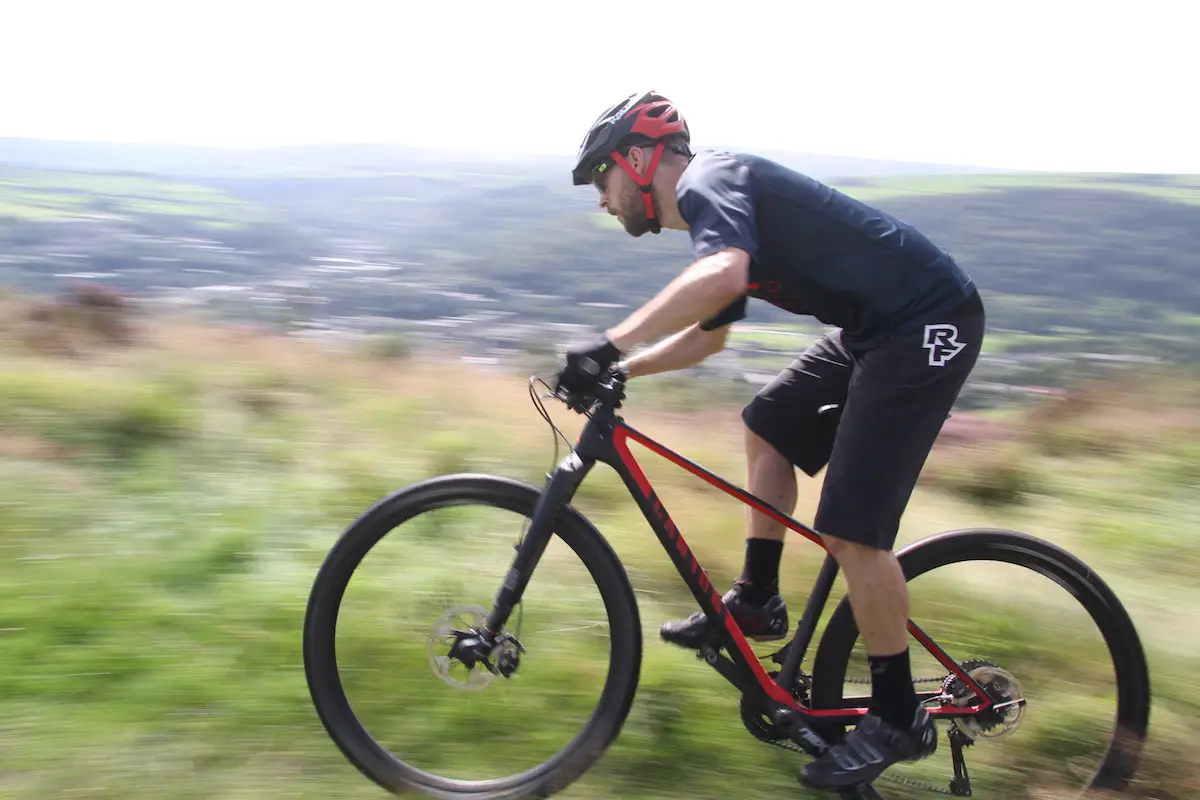
Initial Impressions
The Exceed is the kind of bike that looks fast just standing still. With its matte ‘Volcano Black’ paint job, it just exudes potency. However, as we’ve been finding out, this isn’t just an angry race whippet.
In recent years, a new breed of XC hardtails has begun to emerge. Recent examples of this new breed include the BMC Team Elite that we reviewed in Issue #105 of Singletrack Magazine, and the Trek Procaliber 9.8 SL that I reviewed on Singletrackworld.com. While high-tech race bikes are certainly getting lighter and more responsive than anything preceding them, there’s also been a deliberate shift on their designer’s behalf towards creating a more comfortable and confidence-inspiring ride.

Part of this has to do with XC racecourses becoming more and more technical, and the fact that hardtails and full-suspension race bikes are being thrown down steeper and rougher trails than they have before. In these kinds of situations, having a ridiculously light and responsive hardtail is only one part of the equation.
During the development of the Exceed CF SLX frame, Canyon didn’t want to just build a superlight frame, they also wanted to build a frame that was comfortable to ride too. While the stiffness-to-weight ratio has always been paramount for those who measure their rides in Watts and KOM’s, Canyon states that comfort and control are just as important for race-winning performance. And given that Alban Lakata piloted his Exceed to victory at the 2015 UCI XCM World Championships, I’d say they’ve already proved their point.

Fundamentally, the Exceed is still a purpose-built race bike, but it features geometry that has been gently massaged towards the trail-end of the spectrum. There’s a 69.5° head angle up front, and a lengthened top tube that helps to increase front centre length (and the overall wheelbase) for added stability. The bottom bracket sits low at 63mm down below the hub axle line, and the chain stay length runs at a respectfully short 427mm. And Canyon has achieved that without Boost spacing, whilst retaining 2x compatibility. Of course none of those numbers are particularly radical, but they’re a far cry from what you’d find on the angry hardtails of old.

The Exceed is built around a 100mm travel fork, which in the case of the CF SLX 9.9 is a RockShox RS-1. The entire frame is 100% carbon fibre, with a tapered head tube and a PF92 bottom bracket. The rear wheel is locked down via 142x12mm thru-axle dropouts, and the Shimano Deore XT rear derailleur mounts via a direct-mount hanger. The rear disc brake attaches via post-mount tabs, and is tucked inside the rear triangle of the frame. This has allowed Canyon to thin out the seat stays for more compliance, as they don’t need to be overbuilt to cope with hard braking forces.

On the note of compliance, Canyon has approached rider comfort from two angles. One is the slimmed-down seat stays, which help to encourage compliance by flowing around the seat tube and directly into the top tube. The other is the seatpost. With a design drawn from Ergon (the owners of Canyon and Ergon are brothers), the Canyon VCLS 2.0 seatpost features a split profile that allows the entire post to flex back and fourth. The result is more comfort at the saddle, with the rider’s weight supported via the ‘leaf spring’ seatpost. Canyon claims the Exceed offers 10.9mm of vertical compliance in total, with half coming from the seatpost, and the other half coming from the frame.
Other details on the Canyon Exceed CF SLX frame include internal cable routing, Di2 compatibility, a side-swing front derailleur and a clever headset that features an integrated bump stop to avoid the brake levers and shifters from damaging the top tube in the event of over-rotation. If you whack it hard enough, the hollow bolts are designed to shear off to absorb most of the impact.
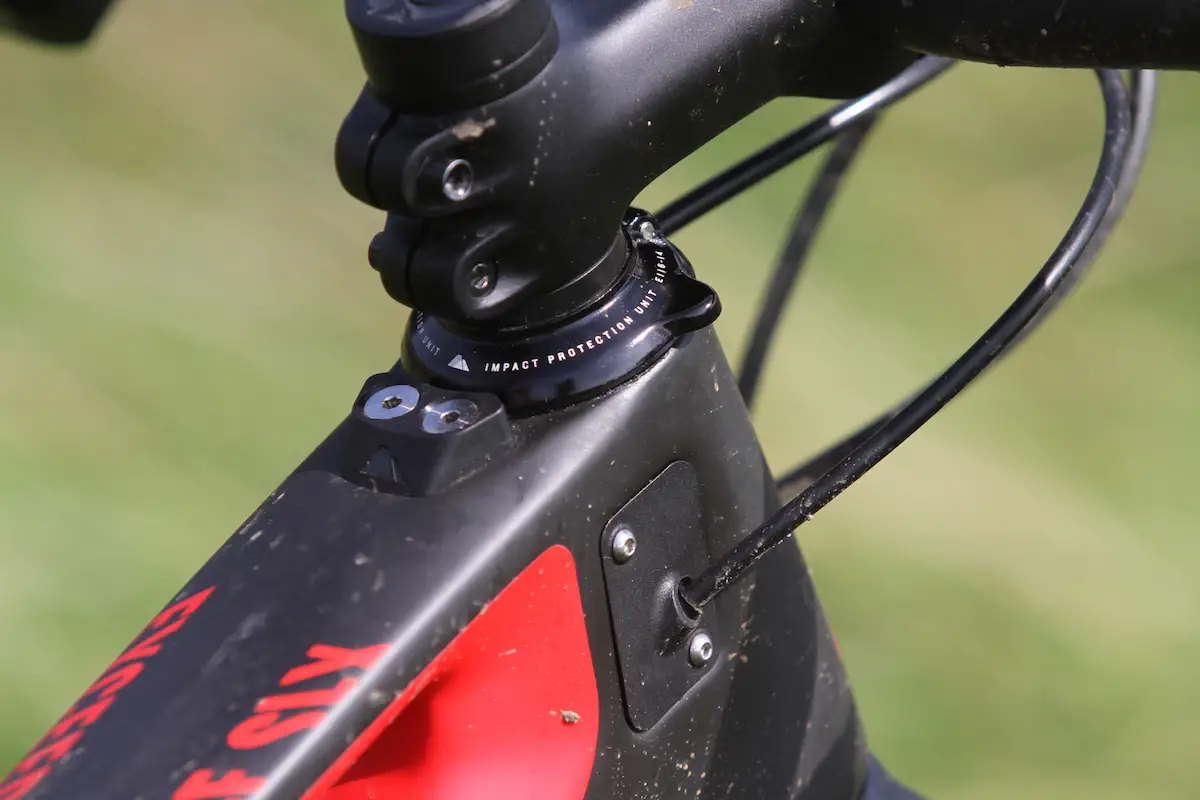
As for the rest of the bike, it’s a pretty incredible package for the money. Shimano has provided a 2×11 Deore XT drivetrain with an 11-40t cassette, which is mated up to 38/28t Turbine chainrings on the Race Face Next SL carbon crankset. Brakes are also Deore XT, with a larger 180mm rotor up front.
Whilst not made of carbon or lathered in bright stickers, the DT Swiss XR 1491 Spline wheels deserve a mention, as they’re as schmick as they are understated. The wheels feature DT’s own 190 hubs, Aerolite straight-pull spokes and a lightweight alloy rim extrusion that gets a 22.5mm internal rim width. For the inquisitive readers out there, I pulled them off the bike to weigh them, and they came in at 1623 grams on our Park Tools digital scales. That’s 17 grams under the advertised weight.
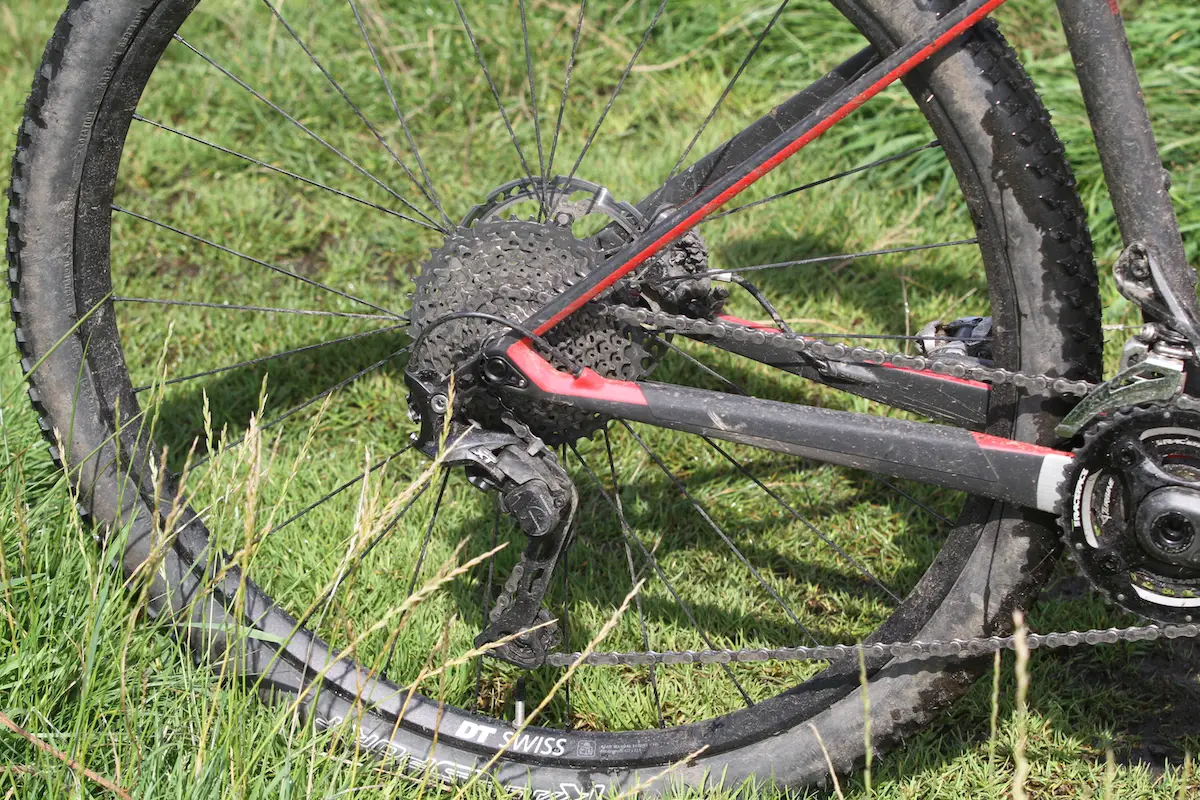
But while Canyon includes tubeless valves in the box and the rims are pre-installed with tubeless tape, unfortunately the Continental X-King tyres are not tubeless compatible. Canyon claims this was a spec decision based on weight, but that argument is flawed. While the tubeless ProTection version of the same tyre is about 120 grams heavier, once you factor in the weight loss of removing two inner tubes from the wheelset, the weight difference is at worst negligible, and at best lighter for the tubeless setup. And given the inherent advantages of running tubeless tyres (lower operating pressures, more grip, reduced rolling resistance etc), I personally think this is an oversight for a bike costing over three grand.
So it’s worth noting that if you want to ditch the inner tubes on the Exceed, annoyingly you’ll have to buy brand new rubber. That’s another cost to factor in to the total price, since you can’t change out parts before you buy the bike.
With the stock spec, our medium Exceed CF SLX 9.9 test bike weighed in at 9.62kg. Inner tubes and all.
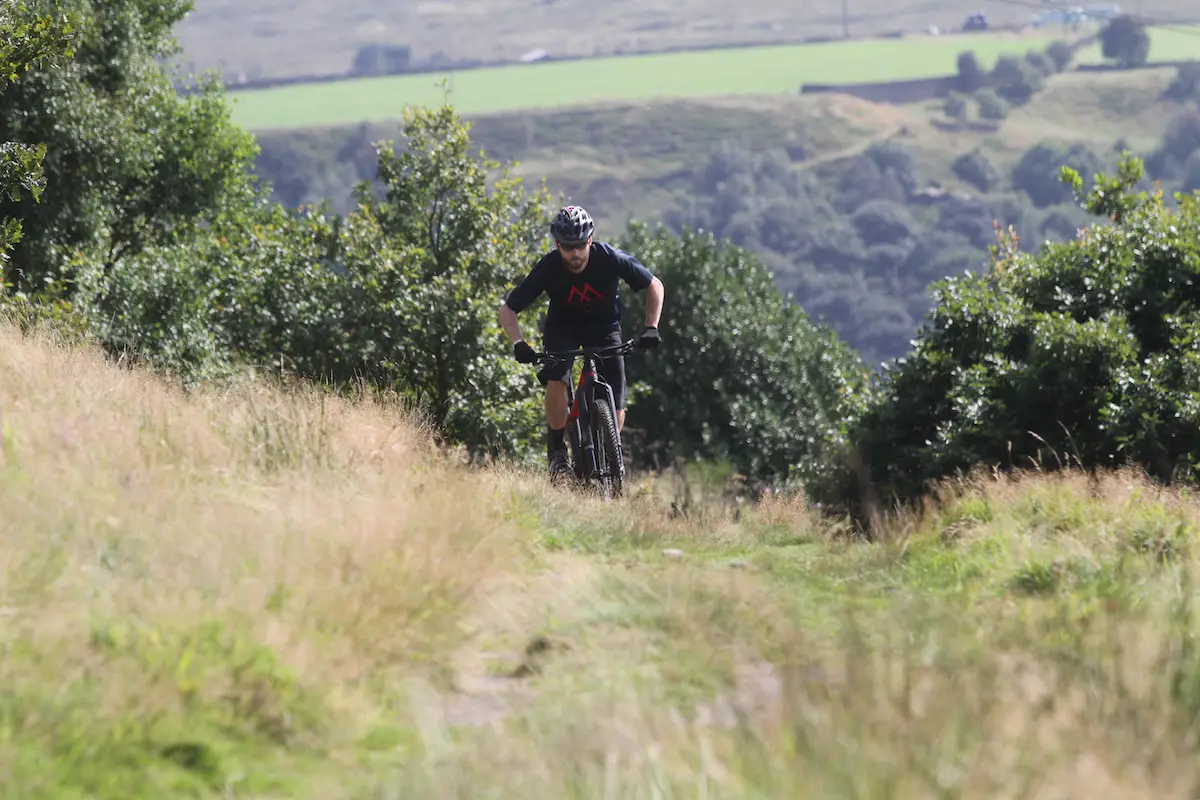
The Ride
Although I’m sure the fun-haters could achieve a ‘heads-down, bums-up’ riding position with skinny bars and a more aggressive stem, the Exceed provides a surprisingly comfortable fit out of the box. Our medium test bike features a 60cm effective top tube length, which comes paired to Canyon’s own 80mm long stem and 720mm wide carbon flat bars. Overall, the cockpit feels quite roomy and open for a race hardtail.
As you’d expect from such a lightweight bike, the Exceed shoots off the mark with plenty of enthusiasm. Part of this is due to the lightweight wheelset, but it’s also because power transfer is incredibly good through the 92mm wide bottom bracket junction. Stiff Race Face Next SL carbon crankarms and an oversized 30mm alloy spindle help to turn your pedal power into acceleration, while the oversized downtube and boxy chain stays give the Exceed a rigid backbone that minimises twisting forces from front to back. This is particularly noticeable when pulling up hard on the bars while hammering out of the saddle, where the Exceed keeps it wheels firmly planted on the ground.
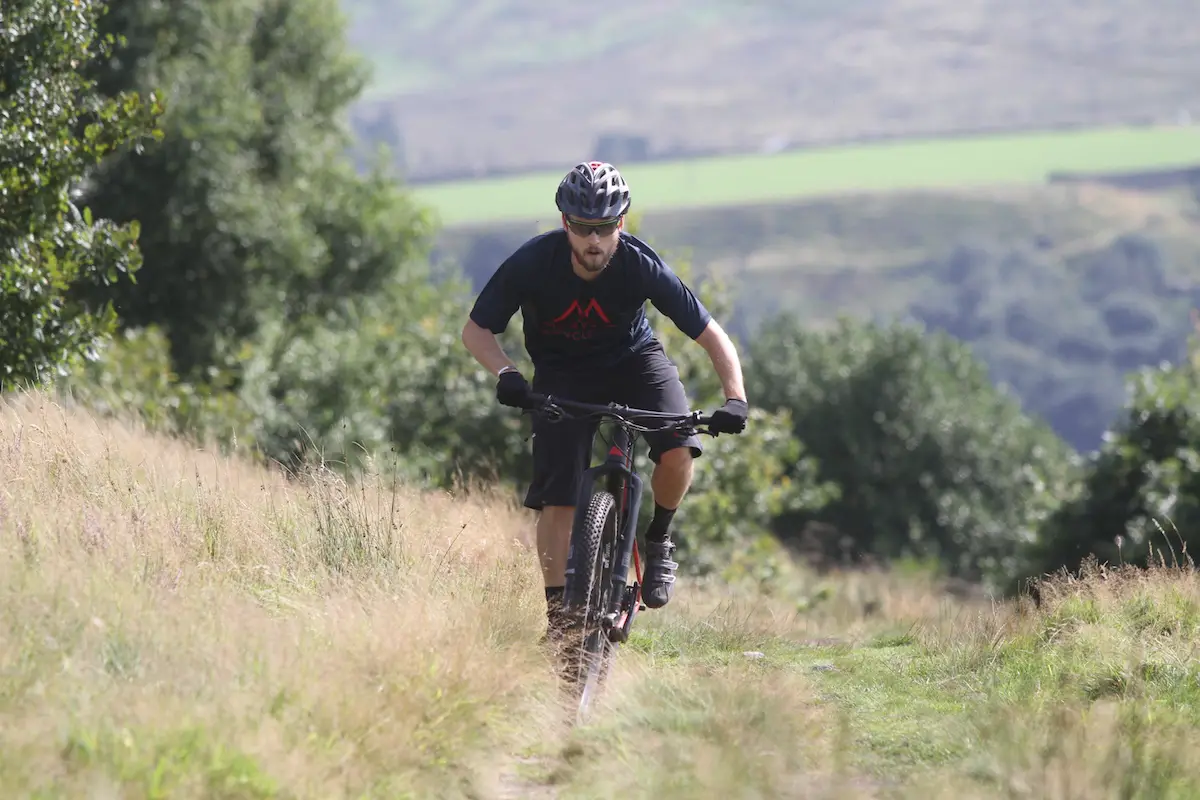
In terms of its overall ride quality, the Exceed feels sharp and responsive, but not agonisingly so. It’s as if Cayon’s engineers have taken a file to the Exceed and rounded off all the sharp edges. It’s light, nimble and eager to dance on the trail, but it doesn’t exhibit the same harshness that other race hardtails do.
While buzzing along dirt fireroads littered with potholes, the effectiveness of Canyon’s efforts with the frame and VCLS 2.0 seatpost make themselves apparent. Square-edge hits are gently rounded off, and higher frequency vibrations are ironed out incredibly well. With many XC and marathon races featuring those kinds of surfaces, this comfort is particularly useful for reducing rider fatigue.
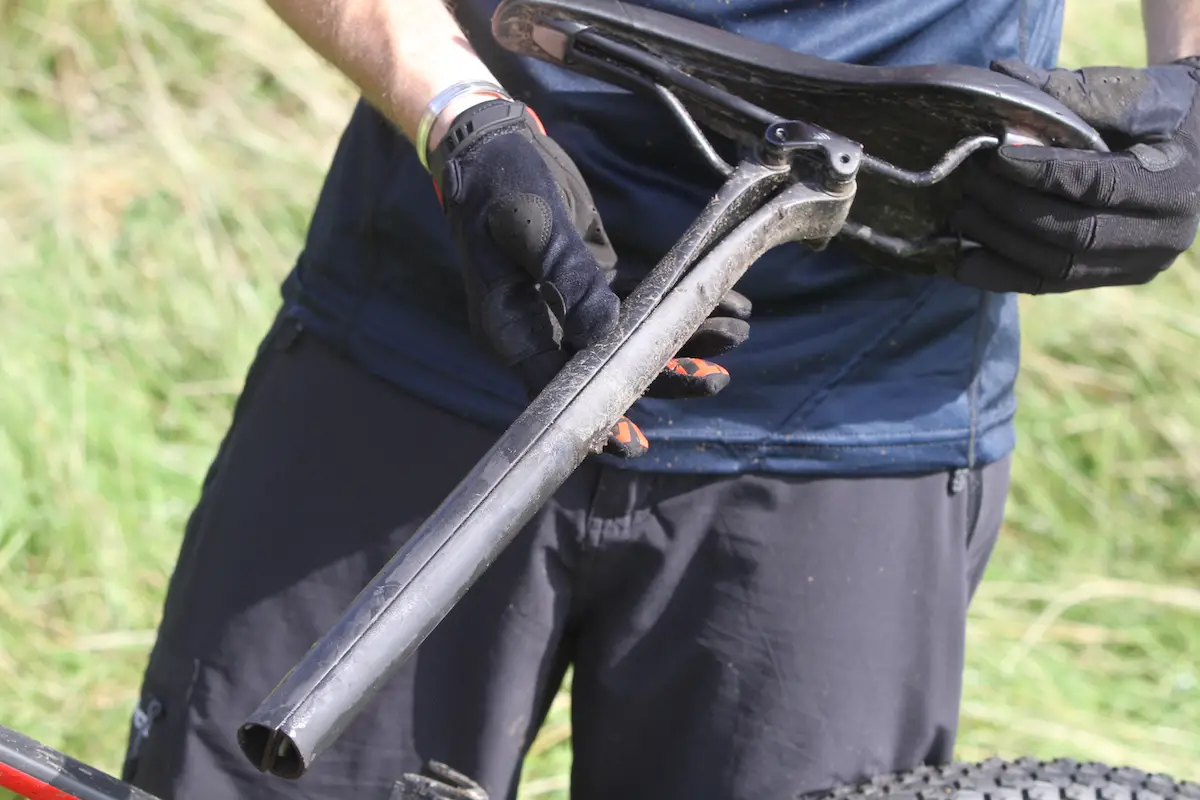
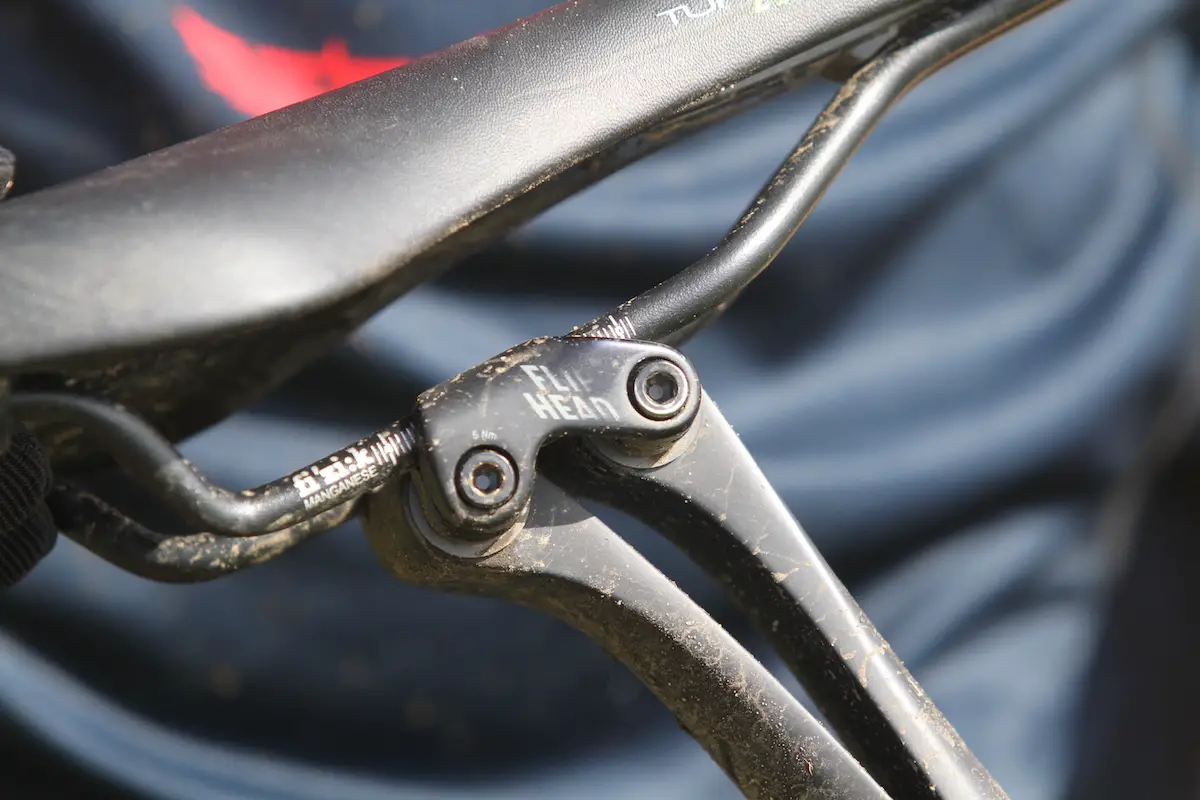
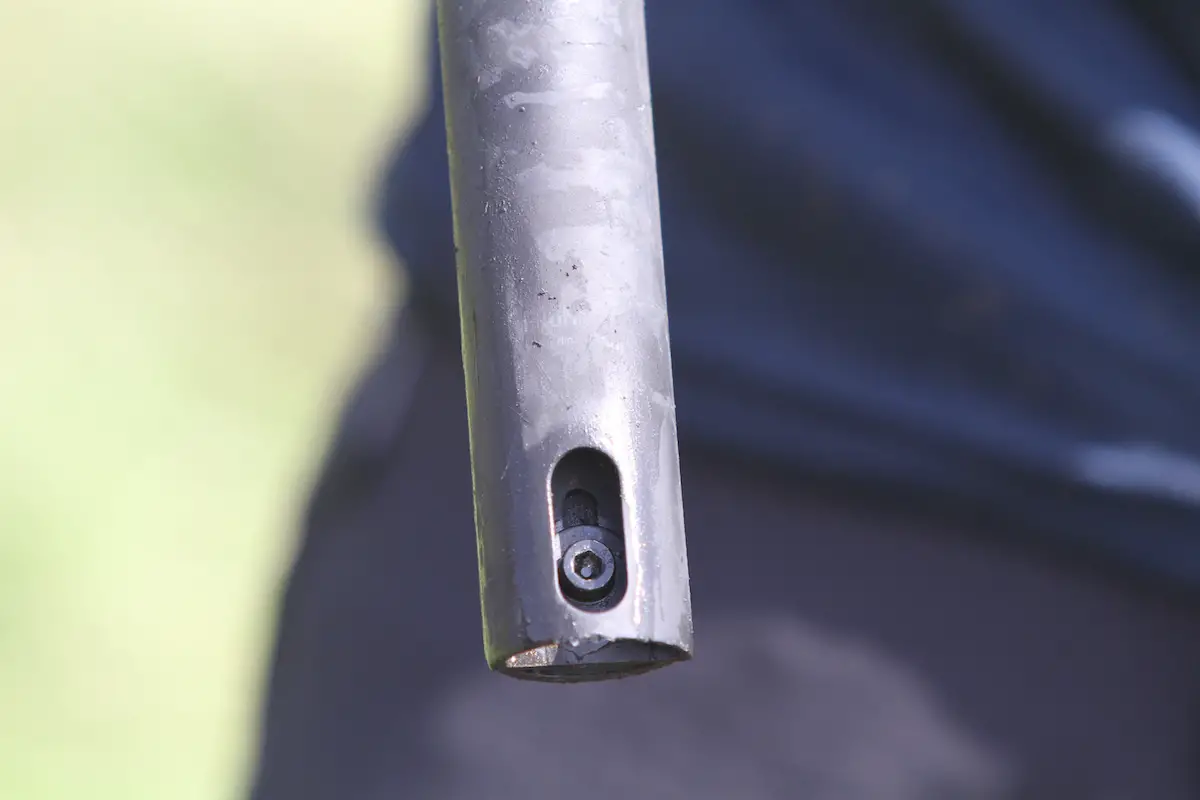
As a comparison, the Exceed isn’t quite as comfy as the Trek Procaliber or the BMC Team Elite, bit it’s not too far behind. I would say the ride quality is more comparable to the Focus Raven Max, which happens to share a nearly identical claimed frame weight.
Handling wise, the Exceed is wickedly nimble on the trail. The short rear centre and low-ish BB height allow the rear wheel to tuck right in underneath you, so you can carve corners at late notice without having to plan beforehand. Combined with the stiff BB junction and thru-axle wheelset, the Exceed is one of the most precise and intuitive race hardtails I have ever ridden.
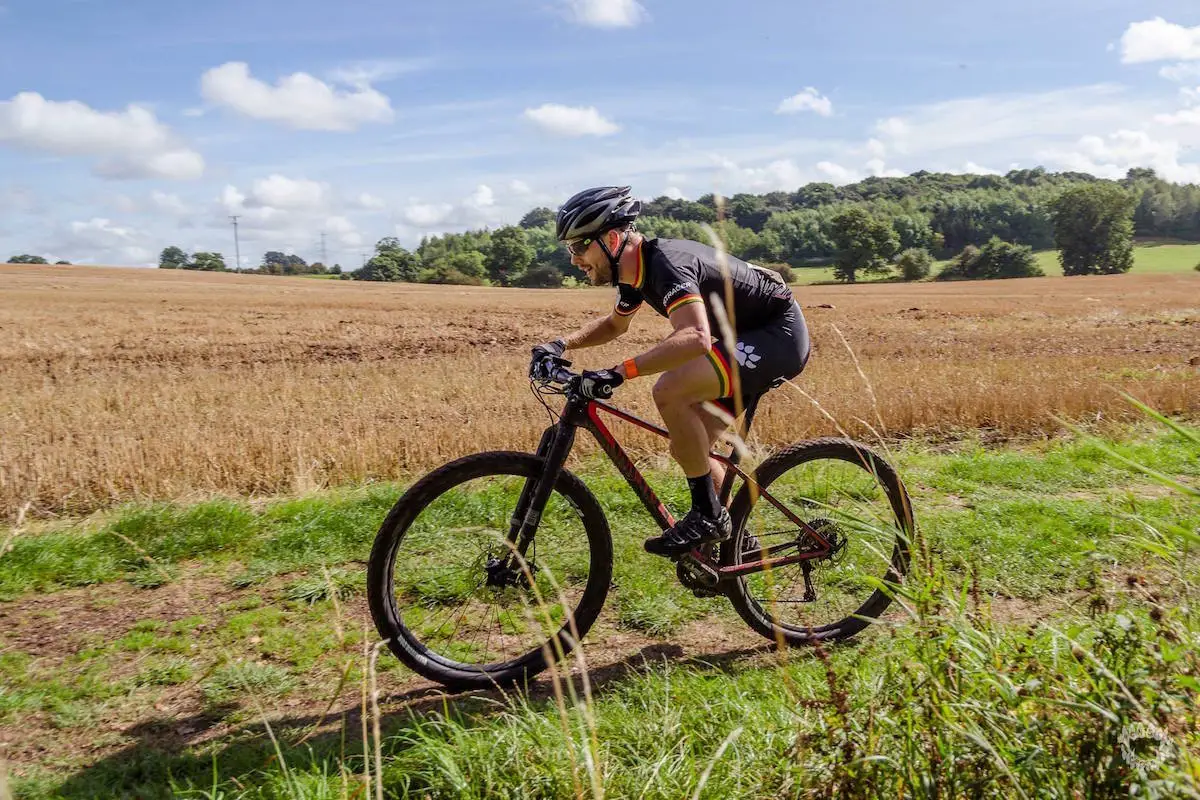
What’s most impressive is that it delivers this precision while remaining somewhat forgiving. In my experience, some race hardtails feel like Formula One cars that can only be piloted by highly experienced riders. The Exceed is not one of those bikes however, and it offers a good deal of forgiveness that doesn’t penalise you (too much) for taking the incorrect line.
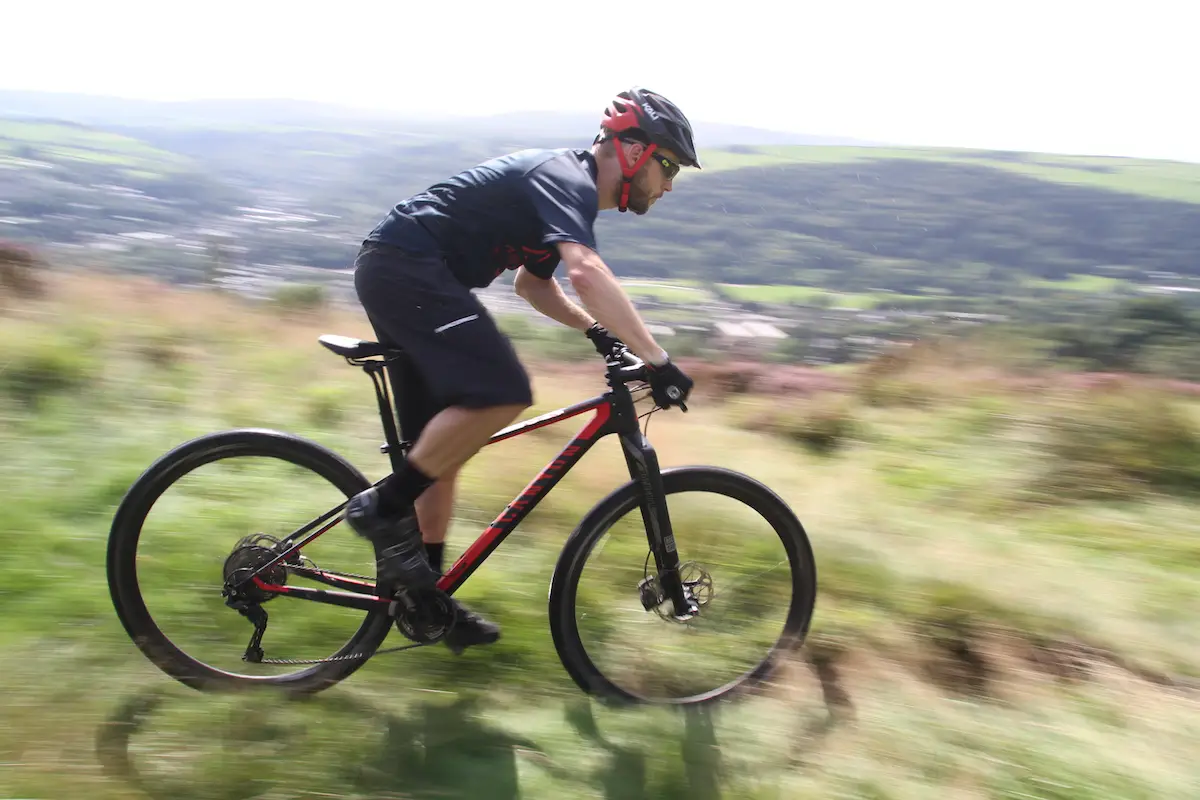
Much of this has to do with Canyon’s intentions to build a hardtail suited to marathon racing. For longer distance riding, comfort is important, but mental fatigue also plays a big role in reducing a rider’s ability to make judgement calls on the trail ahead. The combination of the lengthened front centre and the 69.5° head angle is designed to slow down the Exceed’s steering, offering some of that forgiveness I mentioned above. Canyon also chose to stick with a shorter 46mm fork offset on the Exceed, rather than electing for the longer 51mm offset that many other 29ers are going for. They cite the increased stability as the reason why they stuck with shorter offset (and therefore longer trail figure).

In my experience with the Exceed, the steering still remains sufficiently quick thanks to the low front-end and 80mm stem. The RockShox RS-1 fork certainly helps here too, with its stiff one-piece carbon upper keeping the front wheel on target. That said I’m not a huge fan of the RS-1, as I find it’s bulky chassis to be too unforgiving on rougher trails. Every small knock and twist at the front wheel makes its way to the handlebars, and I find I end up having to wrestle the grips to stay in control. It’s also quite heavy for an XC fork, with a claimed weight of 1666 grams. In comparison, the new RockShox SID World Cup comes in at some 200 grams lighter.
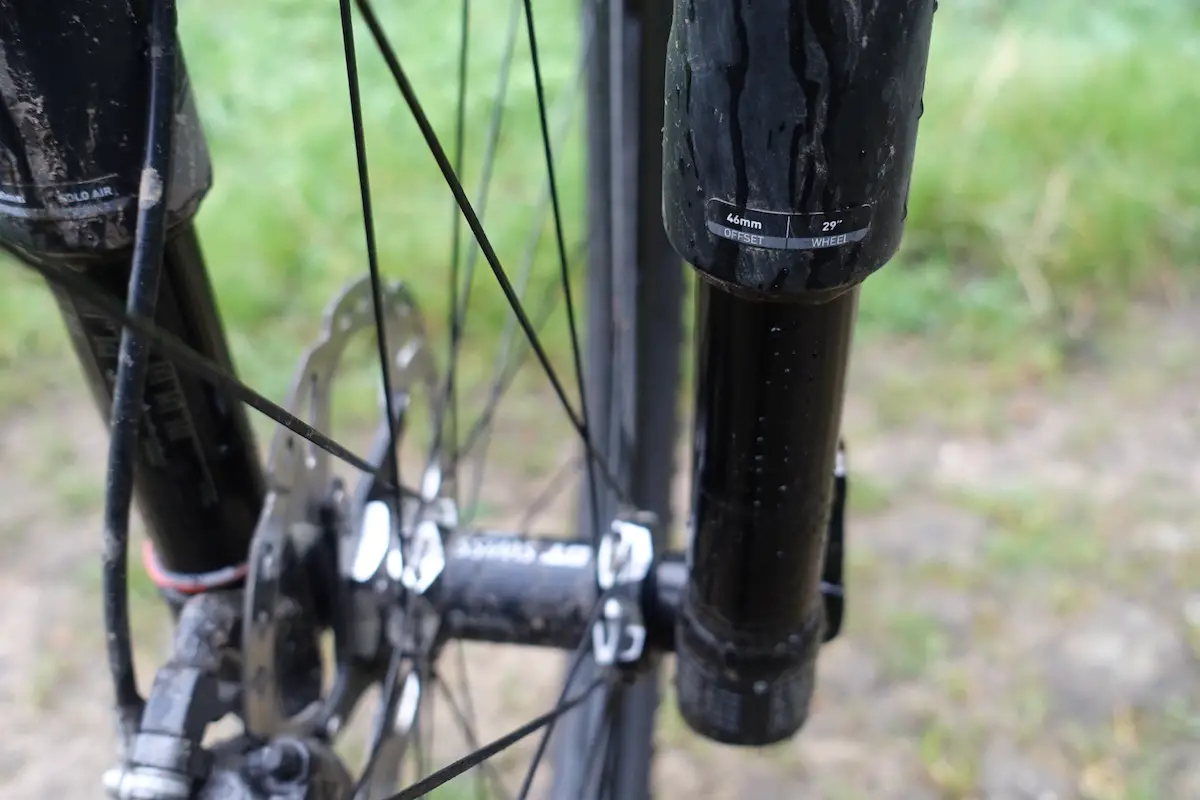
For fork setup, I initially ran just a fraction under RockShox’s recommended air pressure, with 90psi in the Solo Air spring for my 70kg riding weight. As typical of my experience with the RockShox RS-1 and SID forks, I still found the fork to be a little too firm in its starting stroke, while prone to blowing through the end of the travel when landing off small drops on the trail. To remedy this, I fitted an additional Bottomless Token inside the air spring, which allowed me to drop the air pressure down to 80psi. This provided a slightly smoother feel, with the necessary progression to avoid bottoming out.
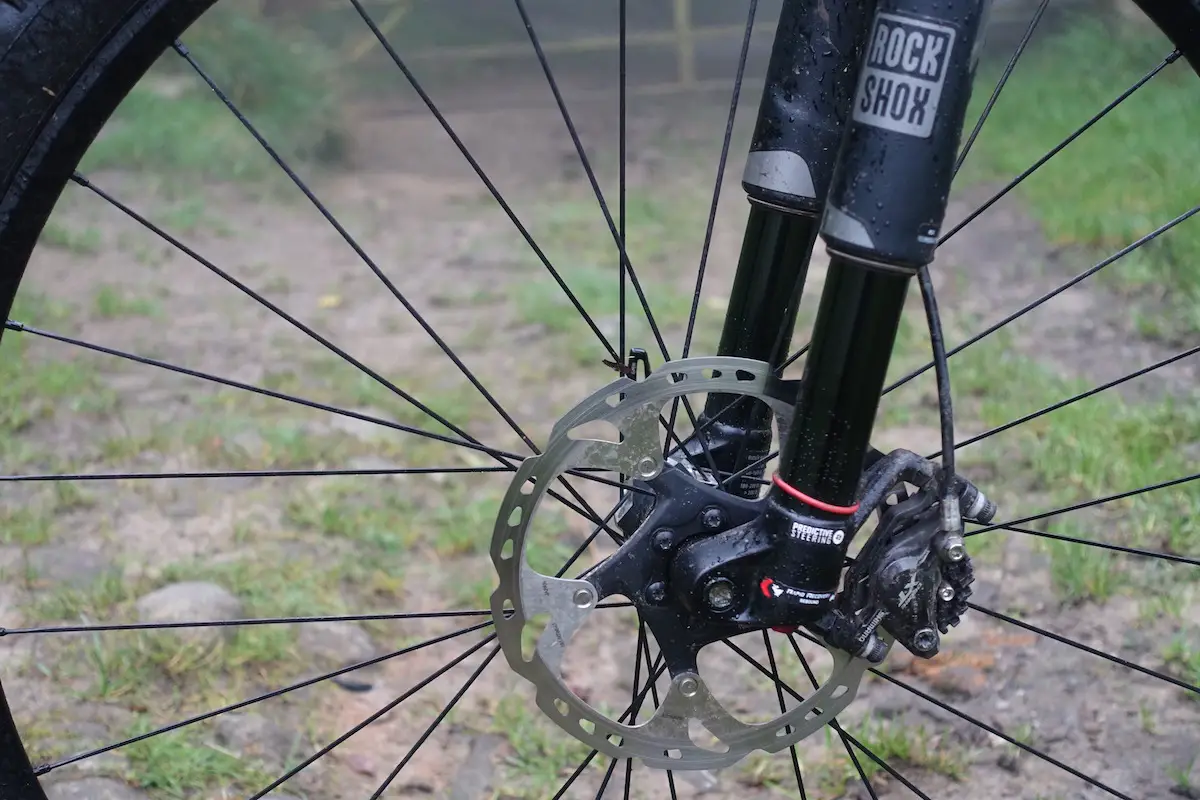
With both fork setups, I was able to achieve full travel, but with a different feel. With two tokens and 90psi, the RS-1 suspension rate felt springier and livelier on the trail, which suited hard and fast XC racing. With three tokens and 80psi, the fork was more eager to move into its travel, and felt a touch more forgiving. Neither setup is right or wrong, but its fun to play around with air volume via the simple Bottomless Token system to see what setup works for you and your riding style.
Component Notes
Throughout the test period, I otherwise had very few issues with the Canyon Exceed and the parts hanging off it. The Deore XT brakes were smooth, powerful and easy to setup with their tools-free reach adjuster, and the drivetrain was absolutely flawless. While not as fashionable as current 1x systems, Shimano’s 2×11 is impressively quiet and smooth. Front shifting was super quick thanks to the new side-swing front derailleur and the Race Face Turbine chainrings. And thanks to the Exceeds willingness to speed its way up the longest and steepest of climbs, I called on the 28t granny ring on many an occasion to winch my way skywards while fellow riders were left walking up.
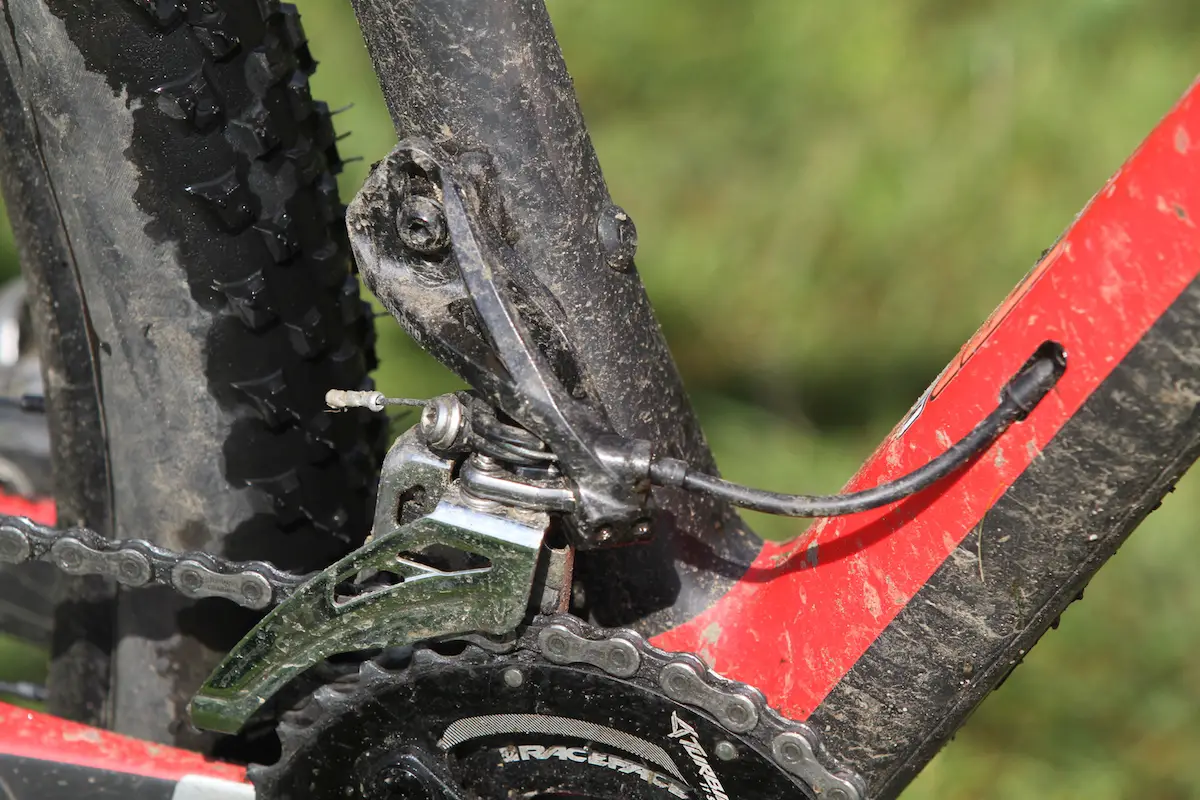
Regardless, some British riders will still want to ditch the front shifter and derailleur on the Exceed and convert it to 1x with a wider range cassette. However, it must be said that rear shifting is addictively smooth with the tighter 11-40t cassette, and it allows you to keep a smoother cadence overall. For riding along bridleways and long fireroad sections, I never had an issue with feeling like I was in between gears, which can happen with a SRAM 10-42t cassette. So maybe give the 2×11 a go before you attack the bike with an allen key.
In terms of contact points, my bottom merely ‘accepted’ the Fizik Tundra saddle. It was neither terrible nor wonderful. But I’ve never been a big fan of the Tundra, and saddles are personal preference anyway. What I can’t deny though is that its wide and flat nose makes it a brilliant platform for sitting right over the front wheel on steep climbs. I’m also ambivalent about the Ergon GA-2 grips and their bulgy middle profile. Personally, if the Exceed were my bike, I’d be swapping them out for Ergon’s excellent GE-1 grips.

I’ve already whinged about the stock non-tubeless tyres, but I did fit a pair of sticky Crown Gems from Vee Tire Co to try out the Exceed with some wider and toothier tubeless rubber. For your reference, the Exceed frame will take a 2.3in wide rear tyre…just. As for the RS-1, there is a load of clearance to go wider again if you so desire.
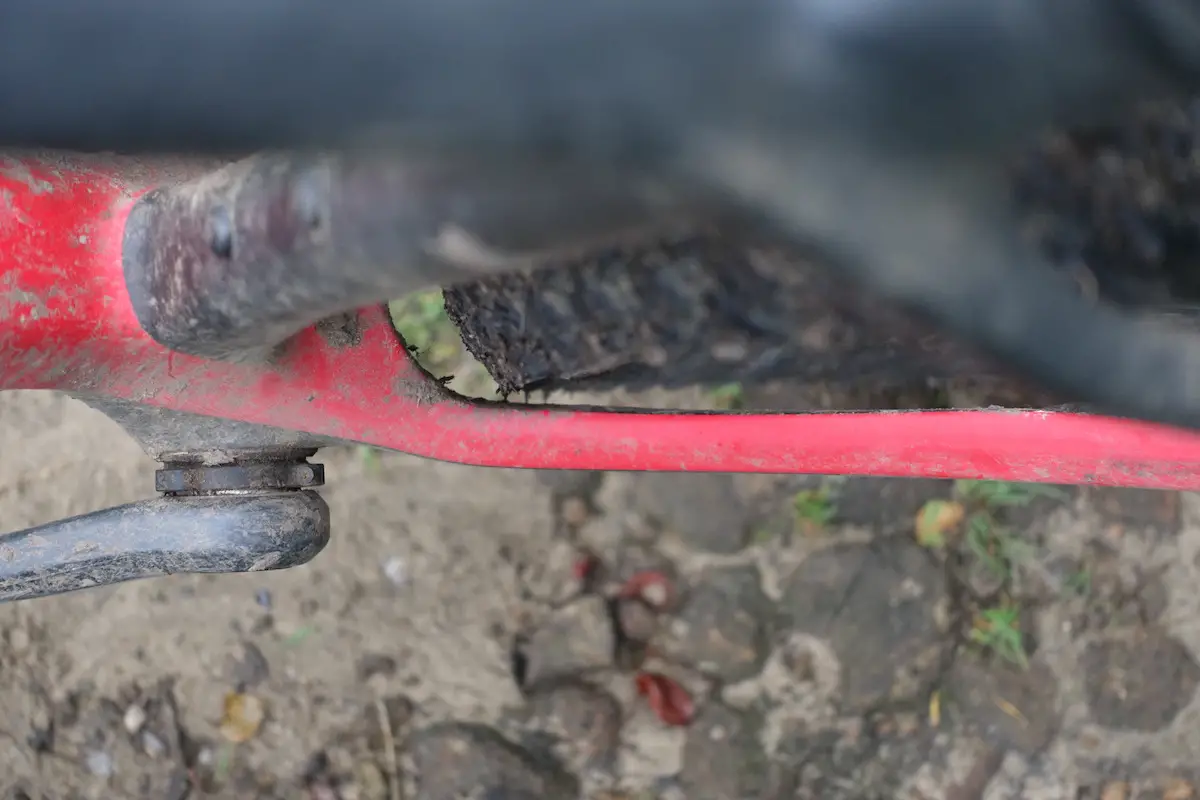
While not many Exceed owners are likely to fit such aggressive treads, it was interesting to see how much further I could push the bike on rougher and more technical trails. The weight difference was instantly noticeable with the Crown Gem tyres, slowing down acceleration and muting the peppy handling. That said, it does go to show how much more confidence and capability you can pack into a lightweight race bike just by changing out the tyres. For owners of such bikes, consider running a chunky set of tyres for training and trail riding, and swapping in the lighter race tyres for events.
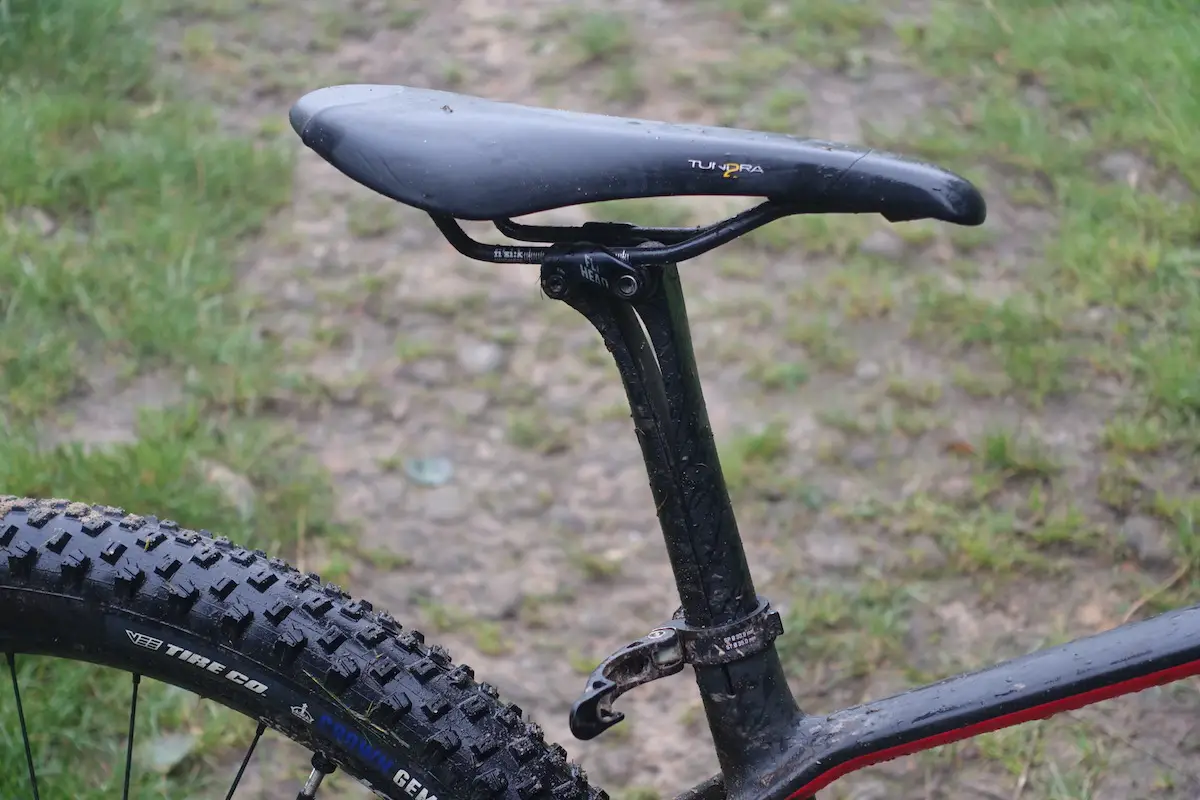
Another performance enhancer for the Exceed would be a dropper post. Because of the leaf-spring design of the VCLS seatpost, there’s only so far that it will lower down into the frame, so thankfully Canyon has built the frame with a 30.9mm diameter seat tube for stealth dropper compatibility. Of course you’d lose the bump-soothing VCLS seatpost, but the improvement to the bike’s descending confidence would offer significant speed gains on technical racecourses.
Overall
Testing the Canyon Exceed proved to be both a predictable and surprising experience. It was predictably fast and efficient for hammering up the climbs, but it was surprisingly smooth and controlled on the more technical stuff.
Compared to the BMC Team Elite and the Trek Procaliber, the Exceed isn’t quite as comfortable on the trail, but it does hold an advantage for its lighter weight and simpler construction. And with shorter chainstays than the other two, it handles the turns more intuitively.
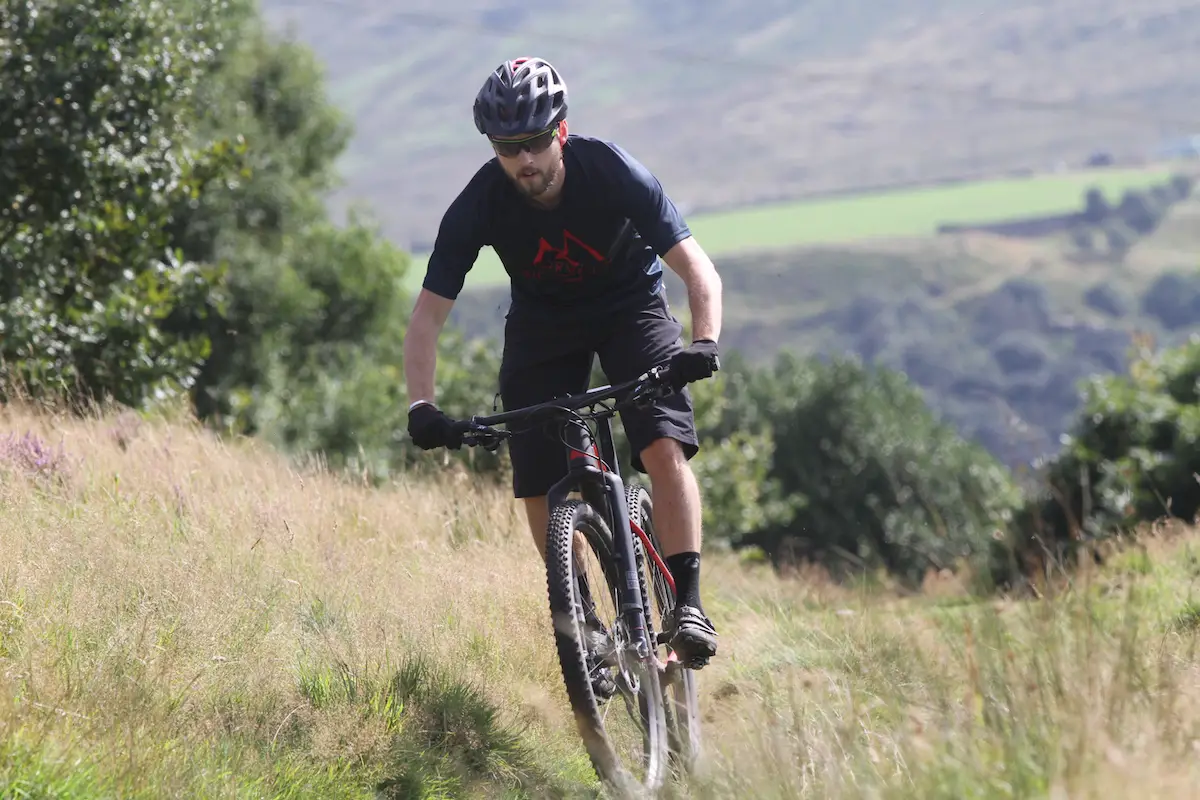
Would I buy one? If I were lining up for some XC and multi-stage marathon racing, I would consider an Exceed for sure. It’s the kind of bike that leaves you with few excuses on the start line, and it just goads you to go faster and faster on every ride. Take it slow and you’ll bounce around like you would on most hardtails. Drop the hammer and give it curry though, and the Exceed will slice and dice its way through singletrack with the kind of tenacity that’ll leave you sweaty and gasping for air at the top of every climb.
However, I would be more likely to gravitate towards an Exceed model that doesn’t come with the RS-1 fork. It’s not that it’s a bad fork, it’s just that I don’t think it’s as amazing as some people make it out to be. And it would seem that Canyon agrees, as for 2017, none of the new Exceed models come spec’d with the RS-1 fork. So that’s now kind of a moot point anyway.
As such, I would wholeheartedly recommend the 2017 Exceed CF SLX 8.9 Pro Race (shown below). It’s got the same frame and DT Swiss wheels, but it swaps in a RockShox SID World Cup fork and a SRAM X0-1 Eagle drivetrain. It retails higher at £3499, but it does come with tubeless tyres, so it gets a thumbs up from me there.
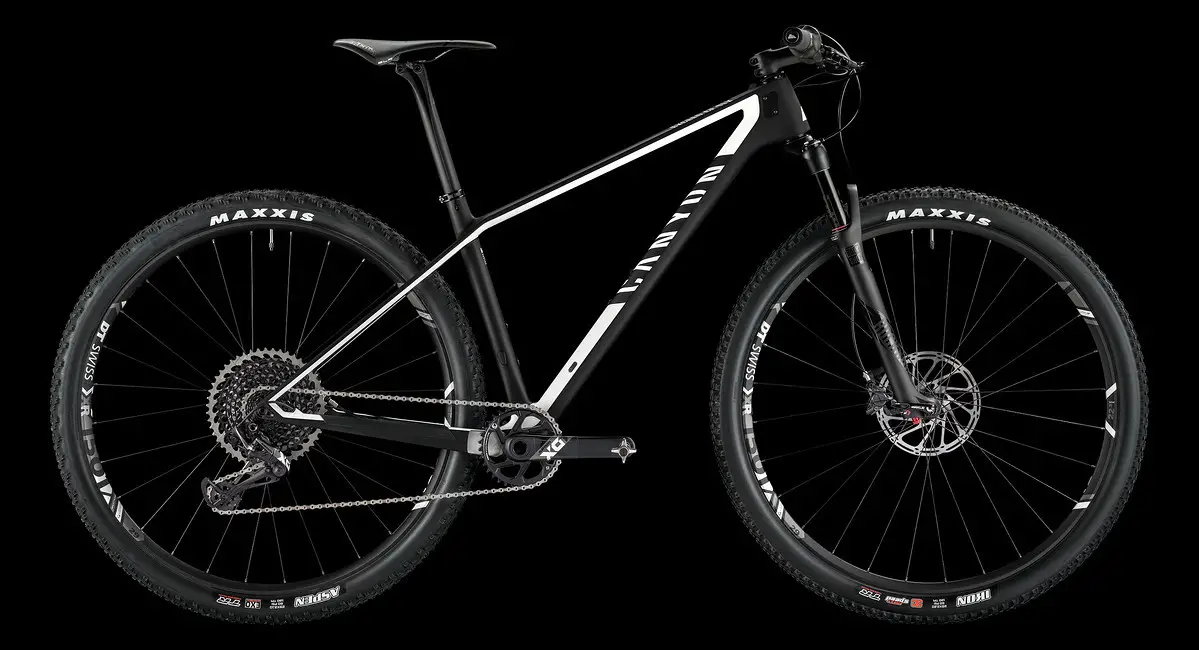
Why harp on about spec? Well with a Canyon, you don’t really get much of a chance to swap parts around like you might do at your local bike shop. Because Canyon places such an emphasis on the price of their bikes, any alterations to the bike spec in some sort of ‘customisation program’ would likely drive up the end cost. Sure, there are definitely some advantages to buying direct, but make sure you consider what service is important to you as a rider to determine if it offers the true value you’re looking for.
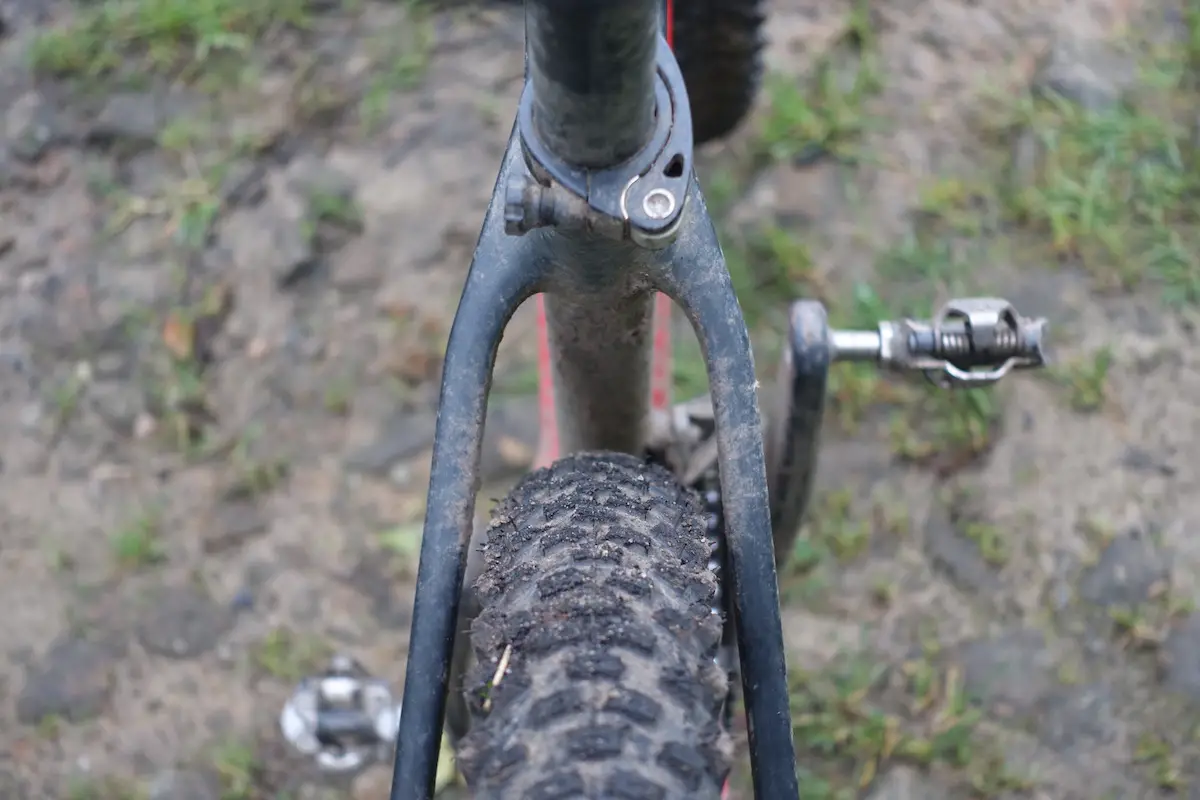
Otherwise, the Exceed has a lot going for it. It comes with a superlight carbon frame that features a lot of attention to detail, and the build kit is without doubt packed with performance and value for money.
With the ability to fit a dropper post and some wider tyres, the Exceed can be setup in a more burly fashion if your trails are rockier and rootier. If it were my bike, I’d also consider pushing the bars out to 740mm wide for a little more stability. And with that inherent versatility, the Exceed has proved to be an excellent example of the modern XC race hardtail.

Canyon Exceed CF SLX 9.9 Specifications
- Frame // Canyon Exceed CF SLX Carbon Fibre
- Fork // RockShox RS-1 100mm Travel X-Loc Lockout Remote
- Hubs // DT Swiss XR 1491 Spline
- Rims // DT Swiss XR 1491 Spline
- Tyres // Continental X-King 29×2.2in RaceSport
- Chainset // Race Face Next SL 38/28t Chainring
- Front Mech // Shimano Deore XT Side-Swing
- Rear Mech // Shimano Deore XT Shadow Plus 11-Speed
- Shifters // Shimano Deore XT 11-Speed
- Brakes // Shimano Deore XT M8000 180/160mm Rotors
- Stem // Canyon V14 80mm
- Bars // Canyon H20 Flat Carbon 5mm Rise 720mm Width
- Grips // Ergon GA-1 Evo
- Seatpost // Canyon S25 VCLS 2.0
- Saddle // Fizik Tundra 2
- Size Tested // Medium
- Sizes available // Small, Medium, Large, X-Large
- Weight // 9.62kg

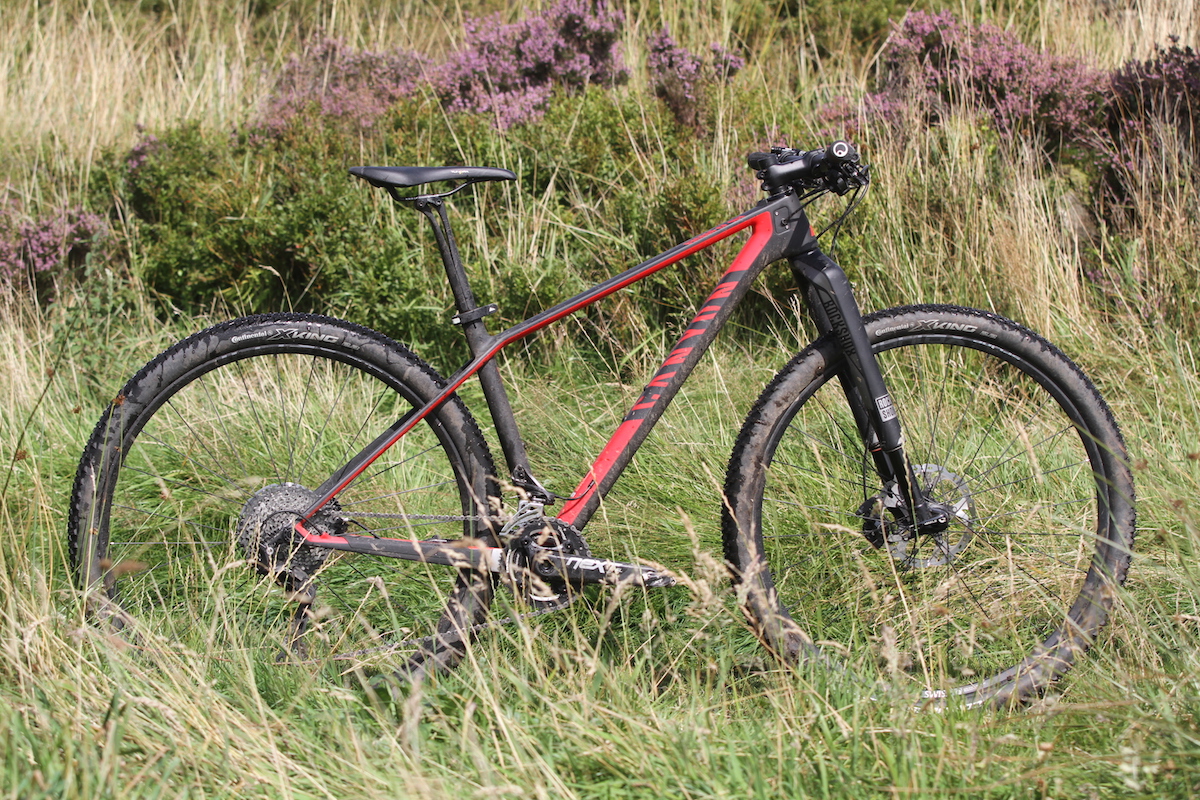




Good detailed review Will, but I can’t help thinking LBS owners, would be pretty disgruntled at being asked to tidy up the cables on the direct sales bike you’ve just wheeled in. I know out local one would!
I know what you mean pedlad but equally I know my LBS has become more and more of a service centre as years progress and now we have mobile cycle mechanics popping up too. Perhaps a change of LBS mindset needed around service = cash and sell bikes as and when too? Love my LBS but there are other options out there too :/
@Pedlad; Thank you for the kind words mate!
It’s a very good point you raise, and a situation that is only likely to occur more often for more bike shops in the future. There are many sides to this conundrum, and I’m sure there will be hundreds of different opinions to both yours and mine.
Ultimately, I guess it’s up to LBS owners whether they’d be disgruntled, or whether they’d be happy that a new customer has just walked into their store with a potential workshop job?
Whether that bike is an old bike, or a new bike that the customer purchased from a different bike shop down the road, or from a direct-sales brand online, or if it’s a complete bitsa bike that has been built up exclusively from internet-purchased and ebay parts – it’s still a customer coming to you with a problem to fix.
Back to Canyon and other direct sales bike brands – Hopefully I was able to get across in the review that there are certain additional costs that potential customers should consider when looking to buy a bike online. Such as having the cables/hydro lines shortened and bled, getting a bike fit, and post-purchase servicing. These are things that are often included with a bike purchase from a local bike shop, and for many riders, will be an important service for many riders.
Of course there are many riders out there who don’t see value in those services, as they may be capable of performing those mechanical duties themselves.
Having managed a bike shop in a previous life and had customers walk into the shop with bikes they’d purchased elsewhere, I can appreciate where those feelings of frustration might come from. I once had a friend bring in a brand new bike he’d purchased online, after months of chatting to me about new bikes and lining up to demo one of our in-store test bikes. I’ll admit that it wasn’t a great feeling, but in the end, he just really wanted that bike. After purchasing it, he brought it in to our store to have all the various workshop jobs performed on it, and we also made it ride about 3000% better after we fitted him to the bike properly and set up the suspension too – which he had no clue how to do.
So at the end of the day, while there may be some frustration, that customer has chosen your store to bring their new bike in to have work performed on it – so that’s always positive whichever way you look at it.
Thanks again for taking the time to read the review and leave your comment @pedlad!
Cheers,
Wil
@singletrackwil, i’m interested in nailing down sizing and although i have used the Canyon size calculator on the website (which puts me at a medium), i believe i’m right between a M & L and so looking for more data. i’m about 179cm, with a 79cm inseam — short legs, long torso, looking for race/aggressive setup.
Mind sharing your body dimensions?
@skud – apologies for the late response, as we don’t get notifications for comments!
I stand at 175cm tall and have an inseam a fraction longer than yours. FWIW, my BB-to-Saddle height is 71cm.
The reach on the Medium Exceed is pretty generous at 425mm, and while I’ve been comfortable with the stock 80mm stem, I reckon I could easily go to a 70mm stem just to bring the bars in a touch. It’s certainly not a short bike by any standard.
At your height you’d normally fit most large frames, but if your saddle height is similar to mine, then if you did go with a Large, the taller head tube will put the bars up way too high – particularly if you’re after a more aggro race setup.
I think it basically comes down to the cockpit setup you want to run. And if you’re after a more race-oriented setup, then I’d likely err on the smaller frame size with the view of running a slightly longer stem if need be.
Hope that helps!
ST Wil.
Awesome info, thanks Wil!